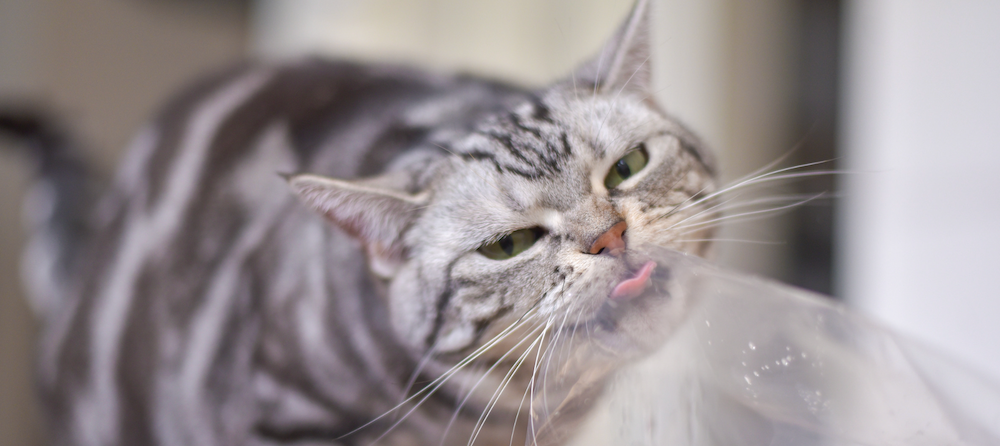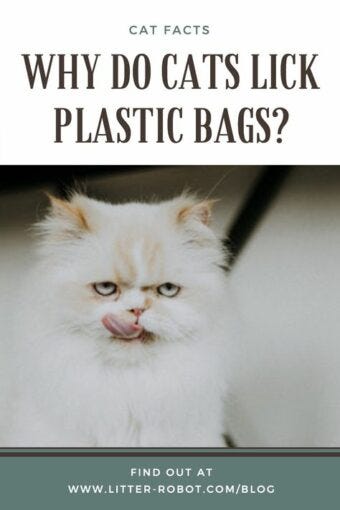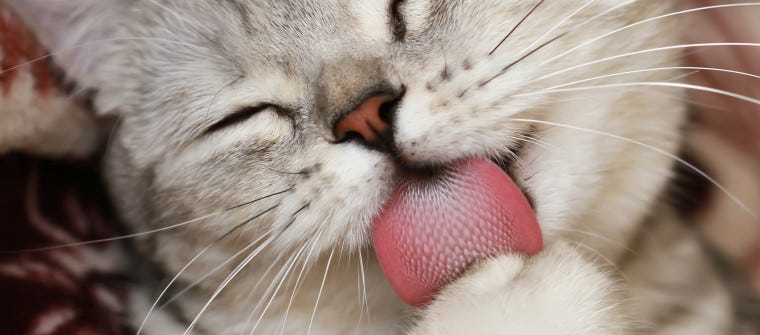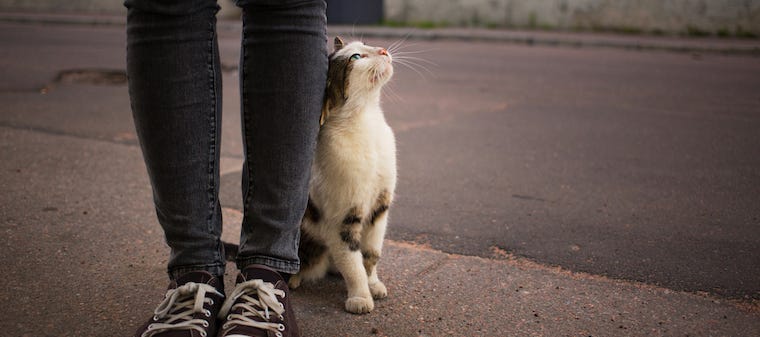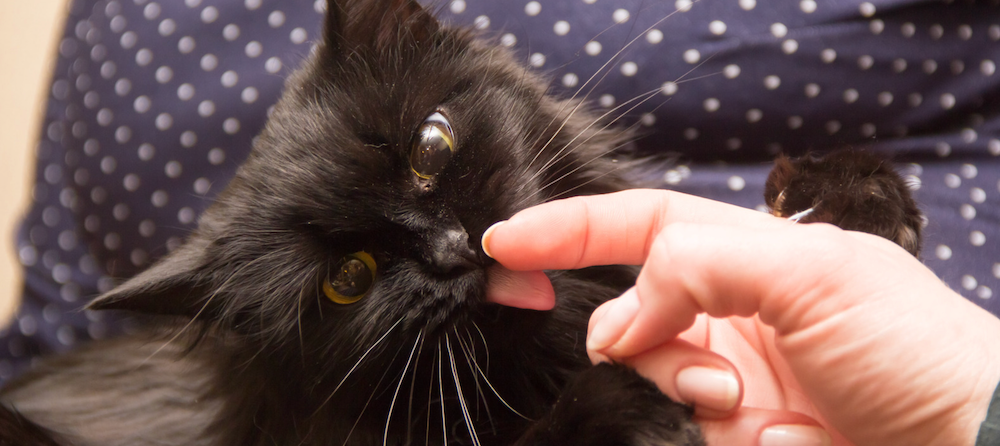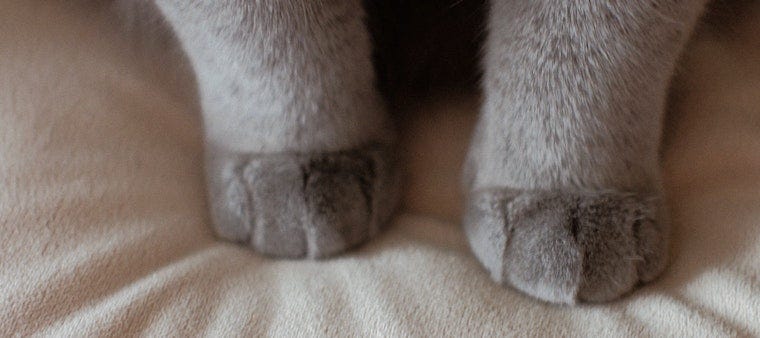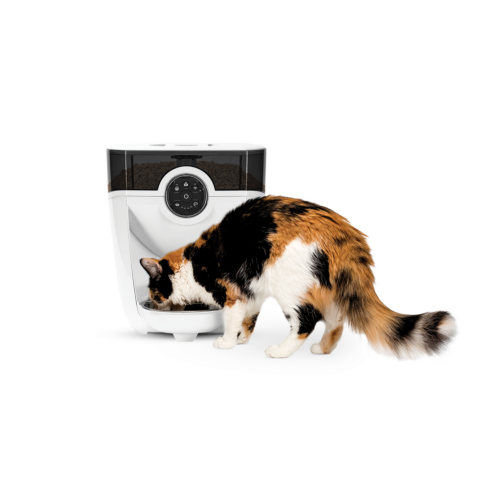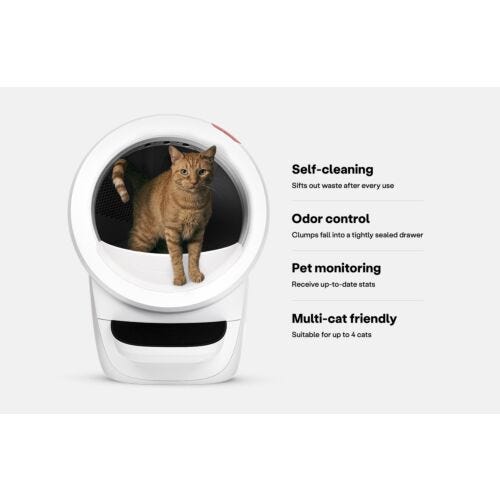All cat people accept and adore the fact that felines are (more or less) weirdos. But why do cats lick plastic? It’s one of the chart-toppers for strange feline behavior.
We’ve all been there: shuffling through your oddly quiet hallways, your eyes peeled for your cat because they aren’t in any of their usual spots, when the soft, unmistakable sound of crinkling plastic betrays them; and there you find kitty, perched over a bag, making out to their heart’s content; and you think… oh, you weird, sweet, silly, darn cat, you.
So, why do cats lick plastic?
If only we could get inside the minds of our feline friends and ask. Theories abound as to why cats like to lick plastic, and especially plastic bags. Although one explanation above all isn’t yet agreed upon in the cat community, there are a few plausible ideas out there.
Sensory experience
You might say that licking plastic hits the jackpot for four out of your cat’s five senses:
- Smell and taste: Did you know that your cat’s sense of smell is 14 to 40 times stronger than a human’s? This little superpower arises not only when considering what the plastic products are made with, but also when considering where the items have been. Some companies are using biodegradable components made with products such as corn starch, while others are made with animal fat, or tallow. Still others may be made with fish oils or fish scales to keep the plastic from sticking together—all of which might attract a cat. Plastic bags can also retain food smells or the leaked juices from meat, fish, or any such appealing item that was stored inside.
- Touch: Plastic bag appeal also stems from its texture. The smooth, cool surface probably feels good on a cat’s tongue, and it escalates from there.
- Hearing: Some people theorize that the crinkly sound of the bag sounds like a rodent marking itself as prey in grass and leaves. Kitty just can’t ignore their instinct to hunt!
Boredom
The understimulated cat is bound to get creative with their antics. Give them interactive playtime at least twice a day, using toys designed like a fishing pole so you can simulate the movements of prey. When they're alone, provide them with opportunities to stay busy: catnip toys, puzzle feeders, cat trees, or a window with a clear view of nature so they can be distracted by birds, squirrels, and the like. Or, if they’re a single kitty, consider giving them a new pet brother or sister!

Compulsive disorder
Veterinary behaviorists have speculated that licking or sucking on plastic is a mild version of a compulsive disorder known as “wool sucking,” which is linked to pica, the persistent eating of substances that are largely non-nutritive. Others relate the behavior to obsessive-compulsive disorder.
There are several reasons why a cat might develop pica, from being weaned too young to dietary deficiencies and underlying medical issues. Certain breeds are also more likely to carry the gene linked to pica (more on that below).
Pay attention to when your cat gets their licks on. If it seems to be in times of great stress, or it occurs very frequently, it may be time to visit the vet to see if medication is in order.
Is licking plastic unsafe?
It’s best to supervise kitty’s lovefest with plastic.
Licking plastic isn’t necessarily unsafe, but chewing plastic is. Chewing may lead to swallowing, which could cause a deadly gastrointestinal blockage. There’s also the off-chance that your cat could get caught up in a plastic bag, leading to strangulation or suffocation.
If you’re worried about not being there to supervise, it may be best to forbid plastic relationships altogether. Instead, explore safe alternatives for your cat’s licking and chewing pleasure, such as providing them with indoor cat grass and toys filled with catnip.
Cat breeds that may be prone to licking plastic
Working with the theory that licking plastic is a form of pica, we know that the following cat breeds are more likely to carry the pica-linked gene.
Siamese

Siamese cats are very energetic and lively. This is great for daily exercise, but most Siamese cats want their humans to entertain them and be involved in their playtime. This can pose a challenge for some cat parents, as they may not have as much time to be involved in their pet’s life as the average Siamese demands.
Siamese cats can quickly become bored if you aren’t fulfilling all their needs—potentially leading to mischief like licking plastic, over-the-top vocalizing, or even depression caused by loneliness. It’s best to give this social butterfly a playmate.
Oriental Shorthair

Oriental Shorthairs are one of the friendliest, most affectionate cat breeds you can find. Like the Siamese (from which they’ve descended), they are extremely people-oriented and can get lonely easily.
The Oriental Shorthair cat is very smart. To keep up with their intelligence, you have to provide enriching activities for them to participate in. You can teach them tricks and encourage them to explore their space, giving them toys and places to perch. Distractions like these will help mitigate undesired behaviors.
Burmese

The Burmese has the lifelong personality of a kitten. Regardless of age, they will be just as playful and rambunctious into adulthood.
You’ll need to commit to more time spent engaging in mentally stimulating puzzles and physical activity. You won’t just be lounging around with a Burmese; you’ll need to help entertain them and give them play options. With cat trees, scratching posts, and plenty of toys, your Burmese will easily fill their downtime (that they would otherwise devote to mischief-making).
Birman

Birman cats are very affectionate and loving toward their humans, as well as curious about new people and situations. They don’t get spooked or disinterested easily, and love to be held.
Their natural curiosity leads to many explorations in the home, but usually without trouble. However, you might find them licking something they’re not supposed to from time to time. Overall, they are lower maintenance for grooming and play, but still require you to be active in their lives and well-being.
Now you know why cats lick plastic from time to time. If this behavior is becoming a problem, please move the plastic items out of reach before a trip to the emergency vet is warranted!
